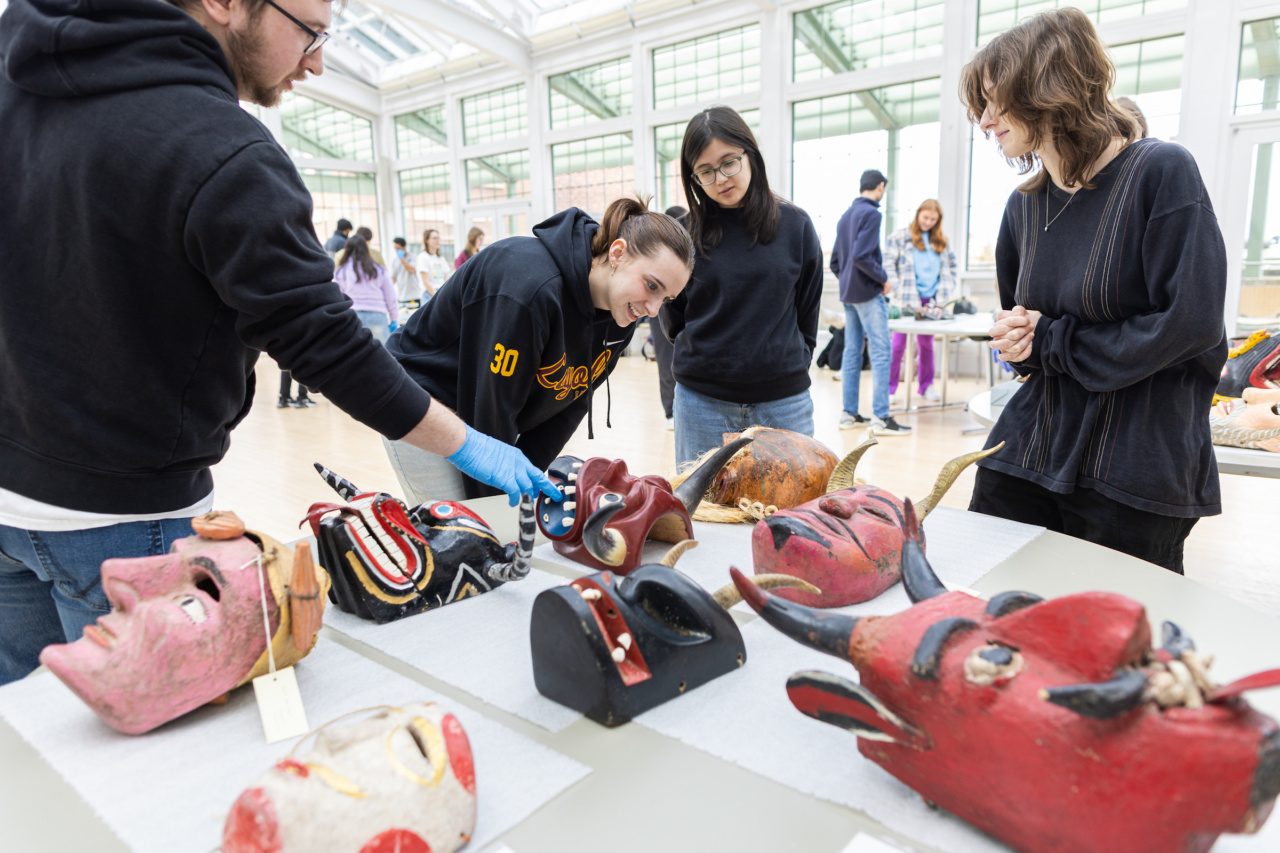
Loyola medical student uses art to explain how the COVID-19 vaccine works
Medical school is challenging enough. Completing the first year almost completely online during a pandemic? The idea might seem insurmountable, but it was the reality Jamison Jones faced when he began his studies at Loyola University Chicago’s Stritch School of Medicine. “I found myself up against the wall,” Jones says. “How do I learn this stuff? It was so hard to be alone.”
But as he sat on Zoom, listening to his professors lecture about molecules and human anatomy, Jones found a way to learn—he began to draw. “Art became my way of teaching myself,” he says.
As Jones used drawings to understand complex medical lessons, he began to think about the power of art to educate, especially during a time when so much misinformation about the COVID-19 pandemic was circulating. The more he learned, the more he wanted to share that understanding with those around him. “I spent my first year of medical school learning about vaccines and what happens when a vaccine enters your body,” he says.
“I found it so enlightening. That knowledge helped dispel so many rumors about the [COVID-19] vaccine.”
Throughout his life, Jones has felt connected to art. In high school, he spent his days in the studio oil painting and learning about graphic design. He also oversaw a humanitarian effort in India that involved the creation of five community murals focused on health and self-empowerment. So, when the Oak Park neighborhood put out a call for mural proposals, Jones quickly applied and, shortly after, was selected to paint a mural depicting how the COVID-19 vaccine works.
With a limited amount of free time between classes, Jones picked a day, set out with a few cans of paint and his paint brushes, and completed the mural, Vaccinate. “I tried to draw how the vaccine enters your body and builds immunity in a simple way using symbols. Hopefully that makes it easy for people to understand how vaccination works,” Jones says.

From the simplicity of the central figure to the community health-focused message, the mural is reminiscent of the art of Keith Haring, an iconic pop artist who is perhaps best known for his 1980s work that became a staple of the HIV/AIDS movement.
“I thought it would be great to replicate [Haring’s] style and teach people that the vaccine can make you more powerful and protect you,” Jones says. “There is strength in getting vaccinated, not just for you, but for your community.”
Jones also attributes his work to the inspiration of Charles Wilbert White, whose famous words Jones read on a recent trip to the Art Institute of Chicago: “Paint is the only weapon I have with which to fight what I resent. If I could write, I would write about it. If I could talk, I would talk about it. Since I paint, I must paint about it.”
White, who was born in Chicago and educated at the city’s School of the Art Institute, was part of the city’s Black artistic community in the 1930s and completed several important mural commissions, including one for a branch of the Chicago Public Library.
“I felt like art is my nonviolent weapon to help me spread truth,” Jones says.
Through art and community service, Jones has found a unique connection to medicine that he believes has been integral to his journey to becoming a physician. While Jones is currently thinking about a career in ophthalmology or emergency medicine, one thing is certain: Whatever he does and wherever he goes, his future will involve art and service to others.


